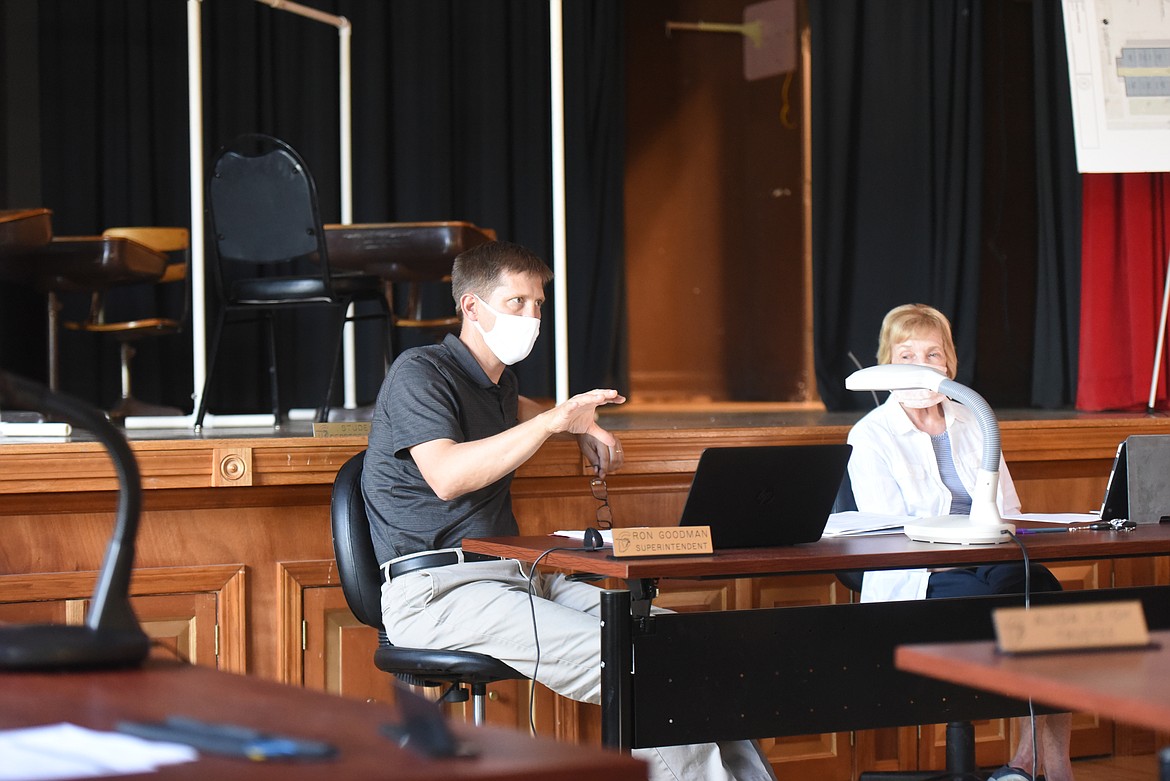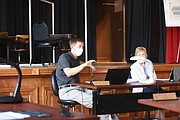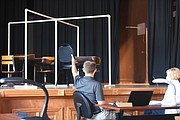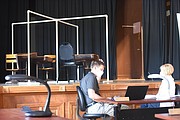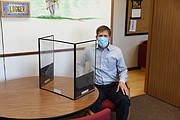More details emerge for coming school year
Libby Public School District administrators are continuing to hammer out details for reopening classrooms during the pandemic.
During an Aug. 3 Libby Public School Board meeting, Superintendent Ron Goodman presented a draft memorandum of agreement officials plan to sign with the Libby Education Association, the local chapter of the American Federation of Teachers.
The memorandum, written by the Montana School Boards Association and the Montana Federation of Public Employees, states that any teacher who is quarantined for COVID-19, experiencing symptoms of the virus, caring for a quarantined individual or has higher than normal risk for contracting COVID-19 is entitled to work remotely.
If a teacher is unable to implement their usual curriculum remotely and the district is unable to provide them with alternative remote work, the teacher will receive paid leave under the memorandum.
The terms of the leave are determined by the Families First Coronavirus Response Act, signed into law earlier this year.
Under the legislation, teachers would receive their regular rate for two weeks of leave if they are unable to work because they are quarantined or experiencing symptoms of COVID-19. If a teacher is unable to work because they are caring for a quarantined individual, they will receive two-thirds of their regular pay for two weeks.
Leave at two-thirds pay could be extended by 10 weeks if a teacher has been employed at a school for at least 30 days and is caring for a child whose school or child care provider is closed due to COVID-19. Goodman told school board members that the paid leave would be taken out of the district’s budget rather than the teacher’s vacation or sick leave. The $518,000 in coronavirus relief funds provided by the state to the district through the end of the calendar year could help pay for this additional leave.
If a teacher had to take more than a month off because of a medical condition, Goodman said they would have to begin taking sick leave.
The memorandum is set to remain in effect until June 30, 2021.
Most of the details of the school board’s reopening plan were left unchanged during the Aug. 3 meeting.
As it stands, the plan is divided into four phases. In phase zero — the most restrictive stage of the plan — schools will only offer remote learning. In phase one, students will be restricted to small groups, which will be kept together throughout the day. Families can still opt for remote learning schedules in this phase.
In phase two, groups of fewer than 50 students will be allowed to mix. Families may still opt for remote learning schedules for valid medical reasons. In phases three, schools would resume normal operations.
Goodman said unless something dramatic occurs, schools will likely open under phase two.
Board members did, however, consider updates to the district’s busing policy under the reopening plan.
The school board previously considered only offering busing services to students living further than three road miles from schools. Members are now considering adding bus routes to provide limited courtesy pickups for students living within the radius.
Goodman said that by having drivers make two trips each morning five more bus routes could be created. Under this system, the district would be able to keep students socially distanced on buses while picking up students, who are unable to walk to school safely on their own, within a three mile radius.
Goodman said the coronavirus relief funds provided by the state could cover the cost of the extra routes.
School board members maintained their stance during the Aug. 3 meeting that students would be asked to wear masks while accommodations could be provided on a case-by-case basis. While students taught by teachers with compromised immune systems would be required to wear masks, other students may be allowed to wear face shields for medical reasons.
On Aug. 5, Goodman said the district had ordered 1,400 three-sided plastic dividers that could be placed on desks. While not substitutes for masks, the dividers could reduce the spread of the virus. Students could also use the plastic barriers during lunch periods when they would not be wearing masks, he said.
At the school board meeting, Goodman argued that working in partnership with parents, students and teachers is going to be vital in reopening schools.
“This is from the bottom of who I am: I think we have lost in our culture a lot of this partnership,” he said.


